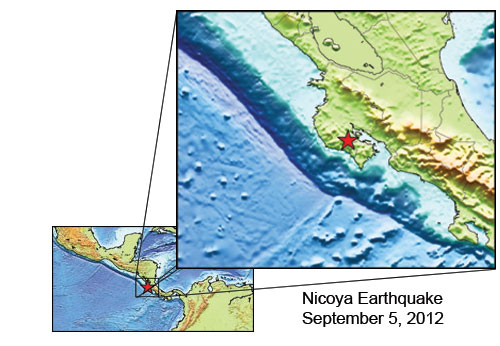The September 5, 2012 M 7.6 Nicoya Earthquake, Costa Rica:
A Natural Lab for Large Subduction Zone Earthquakes
By:
Tim Dixon
University of South Florida
| When: | Wednesday, October 23, 2013, 12:00 p.m.. |
| Where: | Seminar Conference Room, 10100 Burnet Road, Bldg 196-ROC, Austin, Texas 78758 |
| Host: | Steve Grand, UTIG / DGS |
Click for a Live Broadcast.

Abstract
The 2012 Nicoya Earthquake was extremely well monitored with networks of broad-band seismometers and continuous GPS. Changes in coastal geomorphology related to the earthquake were also well-measured by surveys before and after the event.
Most of these data are publicly available. Models that include pre-event slow slip and post-seismic slip are now being developed and compared to co-seismic slip and late stage interseismic locking, allowing a detailed picture of strain accumulation and release.
These models suggest that detailed monitoring of strain accumulation in the critical offshore region could be helpful at forecasting the size of future subduction zone earthquakes.




